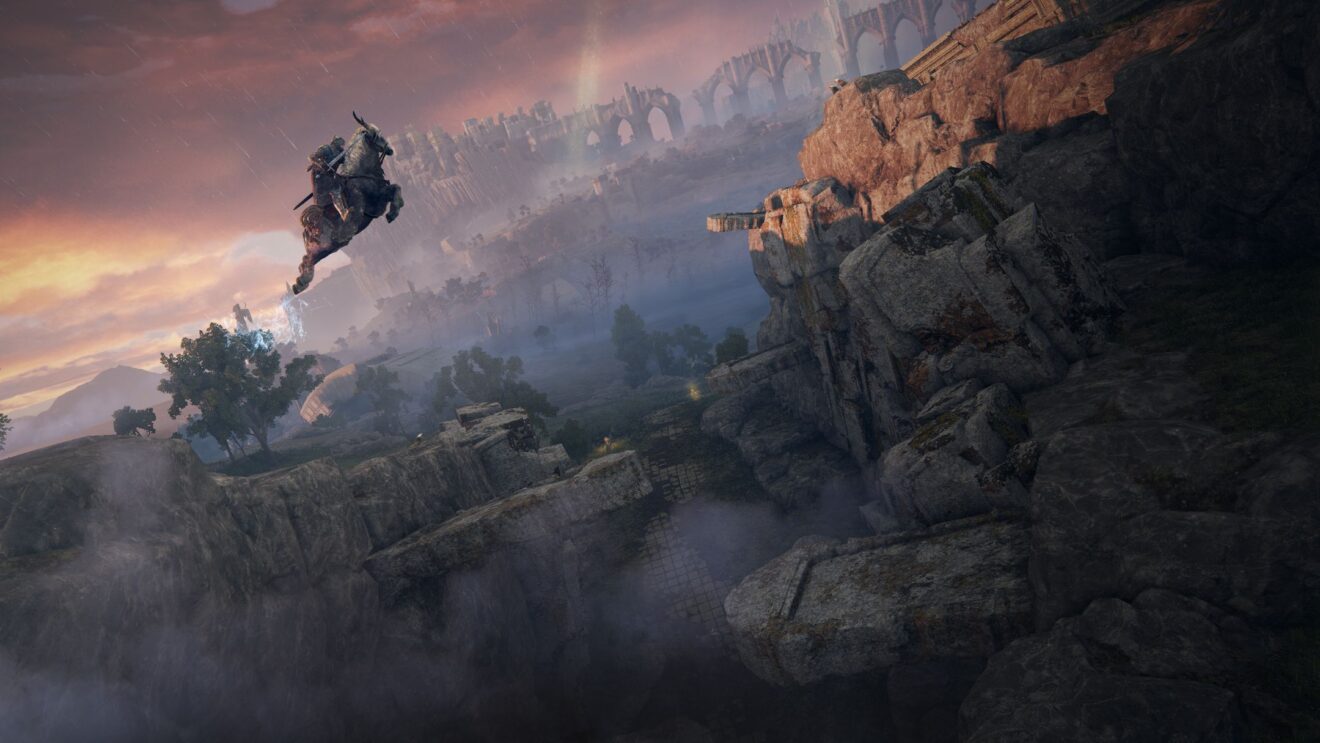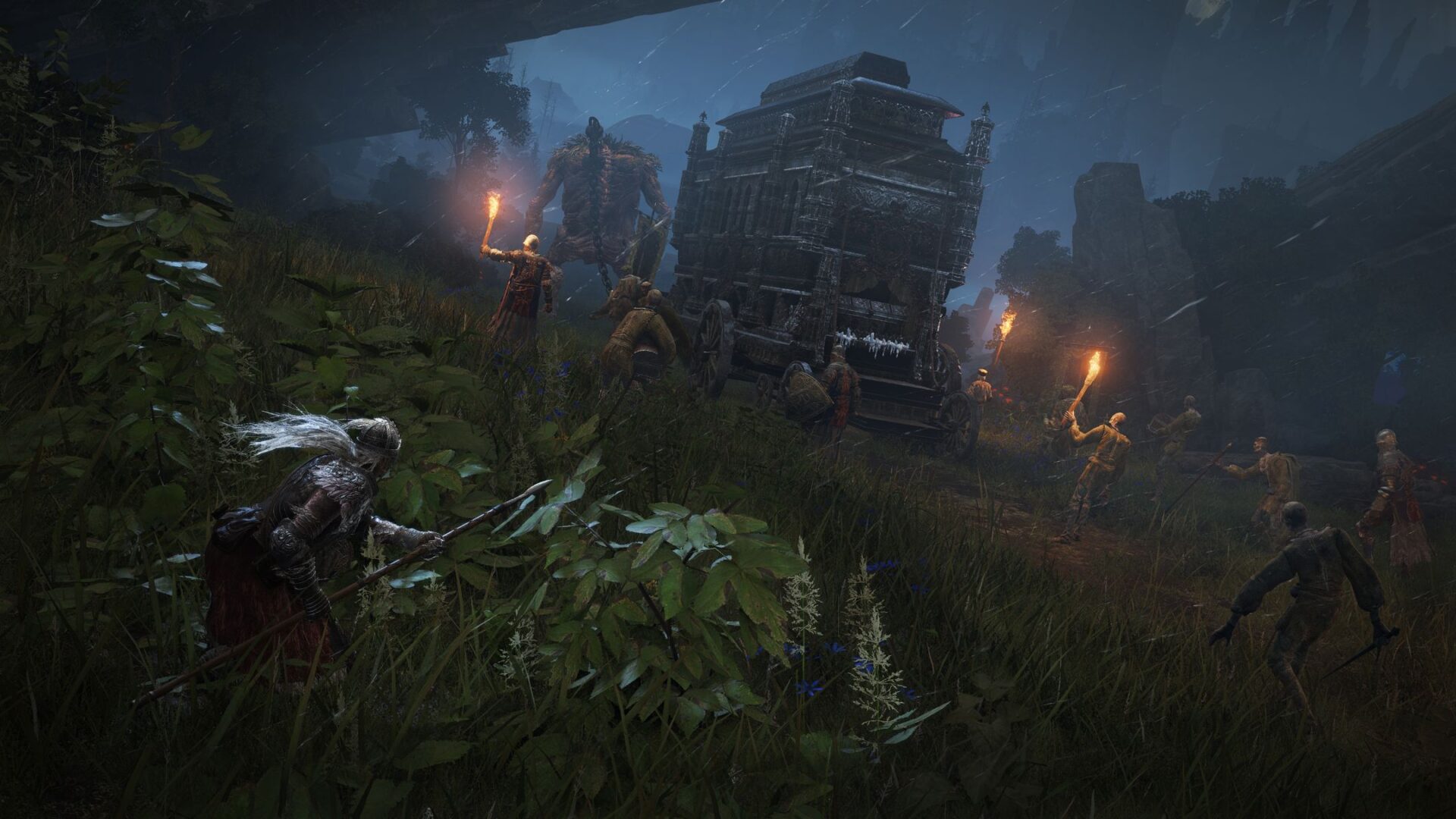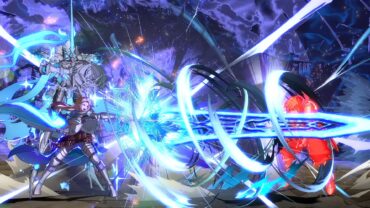
Elden Ring lets you summon the spirits of your dead enemies, make them fight for you
Following the Elden Ring gameplay reveal during Summer Game Fest Kickoff Live, FromSoftware president and game director Hidetaka Miyazaki has given us a ton of new details in an interview with IGN.
Though Elden Ring might resemble Dark Souls with its dark fantasy setting and creatively grotesque enemies, Miyazaki said that the development team has “created a number of new action systems and game systems… to go hand-in-hand with the vast new world.” From what we’ve seen so far, Elden Ring looks like a mashup of every FromSoftware game from Demon’s Souls to Sekiro: Shadows Die Twice.
Many of these new systems were on display in the trailer, including horseback riding, but there was one in particular that you might have missed. One of these mechanics is that you can “summon the spirits of deceased enemies and use them as allies in battle.”
It’s not the first time that a FromSoft game has allowed you to turn your enemies into allies. Sekiro‘s Puppeteer Ninjutsu let you take over the minds of your enemies, for instance. The Dark Souls series and Bloodborne also let you call in AI help, though these were usually in the form of friendly AI and not former enemies, and they could only be summoned in specific spots.
Elden Ring seems to handle this mechanic differently, maybe as a magical ability that you can use at any time. Miyazaki said that you can “just choose to go in head-on” in fights, but that combat was designed to let the player “approach different situations at a high level of freedom.”
Part of that freedom is the way the stamina meter will work in Elden Ring. While it will have stamina meter similar to Dark Souls and Bloodborne, it will have “less influence on the player overall” in Elden Ring. “We wanted to make it feel less restrictive and contribute to that level of freedom more so than our previous titles,” Miyazaki said.
Stealth is also an option in Elden Ring. According to Miyazaki, it is a “relatively simple implementation of stealth, but it has a wide variety of uses.” As in Sekiro, players can crouch and hide in tall grass to avoid detection, and can sneak up behind enemies for a powerful backstab. You can also use stealth to “bypass certain areas and to assess situations from afar.”

Combat skills will also contribute to that sense of freedom. Instead of tying skills to specific weapons like they are in Dark Souls and Bloodborne, Elden Ring allows players to “freely interchange skills between a large variety of weapons.” In fact, there are “around a hundred skills in total,” Miyazaki said. Magic is also a big part of Elden Ring‘s combat.
Players will acquire new weapons, skills, magic spells, and abilities as they explore the world. You can also purchase these elements at shops or learn them from NPCs, Miyazaki said, but most of them are hidden throughout the world, encouraging players to veer from the beaten path. The different spirit summons that we mentioned earlier are items that you can find in the world, too, so it seems like specific enemy types are tied to specific summon items. You can also summon fellow players for co-operative play, though it’s unclear exactly how that will differ from previous FromSoft games and if you can specifically invite your friends to join you this time around.
As for what else we learned about the game, Miyazaki said that the game’s setting—The Lands Between—is split up into “six major areas,” each of which serve as the homes of the game’s demigods that inherited the broken shards of the Elden Ring. The demigods seem to be the main bosses of each area, but we’re sure that there are plenty of bosses and minibosses to fight as you make your way to each demigod’s lair.
Because The Lands Between is so epic in scale, it was important to the developers that the players not “get lost and not have any clue of what to do or where to go,” Miyazaki said. That’s why Elden Ring will have an “element of guidance, particularly at the beginning. There is a mainline route that [the player] can follow, but at any time they’re free to break off this route and to take the untrodden path.”
Miyazaki also said that players can tackle the six major areas of the map in any order they wish, though in classic FromSoft fashion, players “may get sent to a couple of areas against your will.” Likewise, players “wont be able to access everything from the start, but there are a lot of different ways you can approach each area.” If there aren’t at least a couple of shortcuts to unlock or elevators to unstick, we will be a little disappointed. Just a little.
In terms of Elden Ring‘s approach to storytelling, there will still be an element of the player having to discover the world’s hidden secrets as in previous games, but Miyazaki said that Elden Ring is a lot more character-driven, especially when it comes to the six demigods. Unlike Sekiro, the player character won’t have a name, so players can still project themselves onto a “blank slate,” but the story overall will be clearer and easier to grasp without having to read pages of item descriptions, Miyazaki said.
Last but not least, Miyazaki said that Elden Ring “really feels like a culmination of everything that I’ve enjoyed about game development and everything that I’ve brought to this point. I really, really hope that as a fan of [previous FromSoftware games], you’ll enjoy it.”
Elden Ring launches on January 21st, 2022, for Xbox Series X/S, PlayStation 5, Xbox One, PlayStation 4, and PC.
Images: Bandai Namco Entertainment Inc.

Michael Goroff has written and edited for EGM since 2017. You can follow him on Twitter @gogogoroff.





